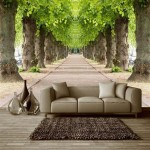Ways To Decorate Balconies
Balconies, often overlooked, can be transformed into valuable extensions of living spaces. Whether the space is expansive or compact, thoughtful decoration can create a functional, aesthetically pleasing, and relaxing outdoor area. The key lies in considering factors such as space, sunlight, privacy, and personal preferences. Success hinges on a well-planned approach, integrating both practicality and design elements. This article explores several effective ways to decorate balconies, providing options suitable for a variety of sizes and styles.
Maximize Vertical Space
Vertical space should not be ignored when decorating a balcony. Especially in compact areas, utilizing walls and railings is crucial for maximizing functionality and visual appeal. This can be achieved through various methods. Hanging planters, for instance, are an excellent option for introducing greenery without taking up floor space. These can range from simple terracotta pots to more elaborate vertical garden systems. Consider the plant species chosen; trailing plants like ivy or cascading petunias add a softening effect, while herbs and vegetables provide an added benefit. Furthermore, wall-mounted shelves are useful for storing items or displaying decorative objects. Utilizing narrow shelving units can create storage space for items like watering cans, gardening tools, or even small decorative objects. Railing planters are also a great way to integrate vibrant flowers and plants into the space, instantly enhancing the balcony's aesthetic.
Establish a Comfortable Seating Area
A primary function of any balcony is to offer a comfortable space for relaxation and enjoyment. The type of seating selected greatly influences the overall ambiance of the space. For smaller balconies, a bistro set, comprising a small table and two chairs, provides a functional and space-saving solution. Folding chairs, for instance, can be easily stowed away when not in use. For larger balconies, a small outdoor sofa or loveseat offers increased seating capacity and comfort. Consider the materials used; weather-resistant options are essential for durability. Wicker, metal, and synthetic materials designed for outdoor use all provide practical choices. Adding cushions and throw pillows enhances comfort and allows for customization in terms of color and texture. Consider the size and shape of the balcony when establishing the seating area. Ensure that there is ample room to move around freely. Integrating a small outdoor rug can help define the space.
Incorporate Lighting for Ambiance
Effective lighting is essential for creating a welcoming and usable balcony space, particularly in the evenings. String lights, often referred to as fairy lights, are a popular choice for creating a warm and inviting atmosphere. These can be draped along railings, wrapped around plants, or hung from the balcony ceiling. Lanterns, either freestanding or hanging, offer a more traditional source of light and can be integrated with other decorative elements. Consider incorporating solar-powered lights for an environmentally friendly and convenient approach. These require no wiring and automatically illuminate at dusk. Table lamps, designed for outdoor use, can also provide focused lighting for reading or dining. The type of lighting chosen should complement the overall design aesthetic of the balcony. Warm-toned light bulbs often create a more relaxing and inviting atmosphere than bright white lights.
Add Greenery and Natural Elements
Introducing plants is a cornerstone of effective balcony decoration. Plants not only add beauty and visual interest but also contribute to a sense of tranquility. Consider a variety of plant types to create a balanced and interesting arrangement. Flowering plants, such as petunias, geraniums, or marigolds, provide pops of color. Herbs and vegetables, like basil, mint, and tomatoes, are practical and aesthetically pleasing. Choose plant species that are appropriate for the amount of sunlight the balcony receives. Group plants together in varying sizes and shapes of pots to create visual interest. Adding natural elements beyond plants enhances the connection to the outdoors. Small fountains or water features create the soothing sound of running water, adding to the relaxing atmosphere. Decorative stones or pebbles can be utilized to enhance the visual interest of the space. Natural wood elements in the form of furniture or decorative pieces further enhance the connection to nature.
Pay Attention to Privacy and Screening
Depending on the building's location and the balcony's orientation, privacy can be a significant consideration. Screens offer a practical and stylish solution for creating a more secluded outdoor space. These can range from simple bamboo screens to more elaborate options, such as lattice panels or fabric screens. Consider the design aesthetic of the balcony when selecting a screen; ensure it complements the overall look. Plants can also offer a degree of privacy. Taller plants, arranged strategically, can act as a natural barrier, blocking views from neighboring balconies or surrounding buildings. Privacy screens can also be incorporated without sacrificing sunlight. Materials featuring narrow gaps, such as slatted wood, can act as effective privacy shields while allowing for ventilation and some sunlight penetration. Consider how the privacy screen's height relates to surrounding structures when installing.
Consider the Color Palette and Design Aesthetic
Maintaining a cohesive color palette and adhering to a specific design aesthetic is crucial for creating a visually appealing and harmonious balcony space. Before purchasing any furniture or decorative items, determine the desired style: modern, bohemian, minimalist, or traditional, for example. Select colors that complement the chosen style and the surrounding environment. Neutral colors, such as whites, grays, and beiges, provide a versatile base, allowing for the incorporation of accent colors through cushions, throws, and planters. Bold colors and patterns can be used to create a vibrant and lively space. Incorporate textures to add visual interest and depth. Textiles, such as rugs, cushions, and throws, provide opportunities to introduce texture and pattern. Consider the climate when selecting materials. Dark-colored furniture absorbs heat, while lighter colors reflect it. Careful planning of the color palette and design aesthetic helps create a cohesive and inviting balcony space.

20 Small Balcony Ideas And Designer Examples

11 Modern Balcony Decor Ideas For Your Home

Balcony Decoration Ideas For Home 2025

8 Stunning Balcony Decoration Ideas To Transform Your Space

Balcony Decoration Ideas For Your Home Designcafe

11 Modern Balcony Decor Ideas For Your Home

Bold Balcony Wall Décor Ideas To Make A Statement Look Beautiful Homes

Balcony Decor Ideas 5 Decoration To Set Off The Beauty

6 Decor Ideas To Take Your Tiny Balcony New Heights

6 Balcony Decoration Ideas That Work Like A Magic Wand The Urban Life







